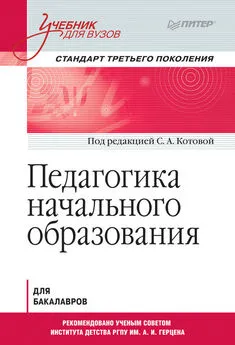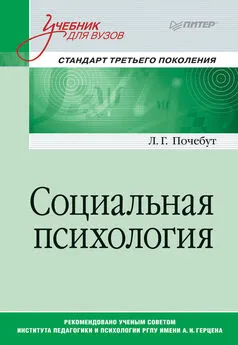Леонид Бурлачук - Психодиагностика: учебник для вузов
- Название:Психодиагностика: учебник для вузов
- Автор:
- Жанр:
- Издательство:Питер Пресс
- Год:2008
- Город:С-Петербург
- ISBN:978-5-91180-841-9
- Рейтинг:
- Избранное:Добавить в избранное
-
Отзывы:
-
Ваша оценка:
Леонид Бурлачук - Психодиагностика: учебник для вузов краткое содержание
Второе издание учебника (первое вышло в 2002 г.) переработано и дополнено. В книге детально рассмотрены история, предмет и методы этой важнейшей отрасли психологического знания. Доступно изложены вопросы, связанные с математико-статистическим обоснованием измерения индивидуальных различий и конструирования психологических тестов. Особое внимание уделено теоретическим и практическим проблемам измерения (тестирования) интеллекта и личностных особенностей. Учебник предназначен для студентов высших учебных заведений, обучающихся по специальности «Психология», аспирантов, а также специалистов, решающих диагностические задачи в своей повседневной деятельности.
Психодиагностика: учебник для вузов - читать онлайн бесплатно ознакомительный отрывок
Интервал:
Закладка:
Hathaway, S. R., amp; McKinley,J. С (1943). Manual for the Minnesota Multiphasic Personality Inventory. New York: Psychological Corporation.
Hayes, W. L. (1973). Statistics for the social sciences (2nd ed.). New York: Holt, Rine-hart amp; Winston.
Heilbrun А. В., Blum N, Goldreyer N. (1985). Defensive projection. An investigation of its role in paranoid conditions./. New. Ment. Dis., 173, № 1, 17–25.
Henderson, N. (1990). Why do gene-environment interactions appear more often in laboratory animal studies than in human behavioral genetics? Behavior and Brain Sciences, 13, 136-7.
Hendrickson, A. E., amp; Hendrickson, D. E. (1980). The biological basis for individual differences in intelligence. Personality and Individual Differences, 1, 3-33.
Henerson, M. E., Morris, L. L., amp; Fitz-Gibbon, С. Т. (1987). How to measure attitudes. Newbury Park, CA: Sage Publications.
Hermann H. (1966). Theoretische Grundlagen der projektiven Tests. In Handbuch der Psychologie, Gottingen: Verlag fur Psychologie, Bd. 6, 71-112.
Hermans, H. (1988). On the integration of nomothetic and idiographic research methods in the study of personal meaning. Journal of Personality, 56, № 4, 785–812.
Herrnstein, R. (1973). IQin the meritocracy. Boston: Atlantic Monthly Press.
Herrnstein, R. J., amp; Murray, C. (1994). The bell curve: Intelligence and class structure in American life. New York: Free Press.
Hetherington, E. M., Reiss, D., amp; Plomin, R. (Eds.) (1994). Separate social worlds of siblings. Hillsdale, NJ: Eribaum.
Hirsch, J. (1975). Jensenism: The bankruptcy of «Science» without scholarship. Educational Theory, 25, 3-28.
Hoffman, L. W. (1991). The influence of the family environment on personality: Accounting for sibling differences. Psychological Bulletin, 110(2), 187–203.
Hogan, R., DeSoto, С. В., amp; Solano, C. (1977). Traits, tests, and personality research. American Psychologist, 32, 255–264.
Holmes D. S. (1968). Dimensions of projection. Psychological Bulletin, 69, № 2, 248–268.
Holmes D. S. (1978). Projection as a defense mechanism. Psychological Bulletin, 85, № 4, 677–688.
Holmes D. S. (1981). Existence of classical projection and the stress-reducing function of attributive projection: A reply to Sherwood. Psychological Bulletin, 90, № 3, 460–466.
Holt, R. R. (1958). Clinical and statistical prediction: A reformulation and some new data. Journal of Abnormal and Social Psychology, 56, 1-12.
Holt, R. R. (1971). Assessing personality. New York: Harcourt Brace Jovanovich. Holt R. R. (1978). Methods in clinical psychology. New York: Plenum: Press, V. 2, 20–37. Horn, J. L. (1968). Organization of abilities and the development of intelligence. Psychological Review, 75, 242–259.
Horn, J. M., Loehlin, J. C, amp; Willerman, L. (1979). Intellectual resemblance among adoptive and biological relatives: The Texas Adoption Project. Behavior Genetics, 9, 177–207.
Hunt, J. M. (1961). Intelligence and experience. New York: Ronald Press.
Hunt, T. amp; Lindley, C.J. (Eds.) (1989). Testing older adults. Austin, TX: Pro-Ed.
International Guidelines on Test Use . www.cwis.kub.np/-fsw_l/its
Jackson, D. N. (1975). Intelligence and ideology. Science, 189, 1078-80.
Jastak, S., amp; Wilkinson, G. (1994). Wide Range Achievement Test (3rd ed.). San Antonio, TX: The Psychological Corporation.
Jenkins, J.J. amp; Paterson, D. G. (Eds.) (1961) Studies in individual differences. New York:
Appleton-Century-Crofts.
Jensen, A. (Ed.), Social class, race and psychological development. New York: Holt, Rine-hart amp; Winston.
Jensen, A. R. (1969). How much can we boost IQand scholastic achievement? Harvard
Educational Review, 39, 1-23. Jensen, A. R. (1972). Genetics and education. New York: Harper amp; Row. Jensen, A. R. (1980). Bias in mental testing. New York: Free Press. Jensen, A. R. (1998). The g factor. Westport, CT: Praeger Publishers.
Johnson, J. W. (1984). An overview of psychological testing. In M. D. Schwartz (Ed.), Using computers in clinical practice (p. 131–134). New York: Haworth Press.
Juel-Nielsen, N. (1980). Individual and environment: Monozygotic twins reared apart (revised edition of 1965 monograph). New York: International Universities Press.
Kamin, L.J. (1974). The science and politics oflQ. Hillsdale, NJ: Erlbaum.
Kaplan, R. M., amp; Sacuzzo, D. P. (1993). Psychological testing: Principles, applications, and issues (3rd ed.). Pacific Grove, CA: Brooks Cole.
Karoly, P. (Ed.) (1985). Measurement strategies in health psychology. New York: Wiley.
Kaufman, A. S. (1979). Intelligent testing with the WISC-R. New York: Wiley.
Kaufman, A. S. (1990). Assessing adolescent and adult intelligence. Boston, MA: Allyn amp; Bacon.
Kaufman A.S., Lichtenberger E.O. (1999). Essentials of WAIS-III Assessment. New York: John Wiley and Sons, Inc.
Kelley, T. L. (1927). Interpretation of educational measurements. New York: World Book Company.
Kelley, T. L. (1928). Crossroads in the mind of man: A study of differentiate mental abilities. Stanford, CA: Stanford University Press.
Keyser, AJ. amp; Sweetland R. C. (1987) (Eds.). Test Critiques Compendium. Kansas City, MO: Test Corporation of America.
Keyser, D. J., amp; Sweetland, R. С (Eds.) (1985). Test critiques (Vol. 1). Kansas City: Test Corporation of America.
Kleinmuntz, B. (1967). Personality measurement. Homewood, IL: The Dorsey Press.
Kleinmuntz, B. (1977). Personality measurement. New York: Krieger.
Kline, P. (1986). A handbook of test construction. New York: Methuen.
Kline, P. (1993). Personality. The psychometric view. London: Routledge.
Kline, P. (1994). The Handbook of Psychological Testing. London: Routledge.
Kline, P. (1998). The new psychometrics. Science, psychology and measurement. London:
Routledge.
Klopler, В., amp; Davidson, H. (1962). The Rorschach technique: An introductory manual. New York: Harcourt, Brace, Jovanovich.
Knobloch, H., amp; Pasamanick, B. (Eds.). (1974). Gesell and Amatruda's developmental diagnosis (3d ed). New York: Harper amp; Row.
Knobloch, H., Stevens, F, amp; Malone, A. F. (1980). Manual of developmental diagnosis. Hagerstown, MD: Harper amp; Row.
Koson, D., Kitchen, C, Kochen, M., amp; Stodolosky, D. (1970). Psychological testing by computer: effect on response bias. Educational and Psychological Measurement, 30, 803–810.
Kramer, D. A. (1983). Post formal operation? A need for lurther conceptualization. Human Development, 26, 91-105.
Krug, S. E. (1987). Psychware Sourcebook (2nd ed.). Kansas City, MO: Test Corporation ol America.
L. Resnick (Ed.) (1976). The nature of intelligence. Hillsdale, NJ: Erlbaum.
Labouvie-Viel, G. (1982). Dynamic development and mature autonomy: A theoretical prologue. Human Development, 25, 161–191.
Lambert, N. M. (1991). The crisis in measurement literacy in psychology and education. Educational Psychologist, 26, 23–35.
Lanyon, R. I. (1978). Psychological Screening Inventory: Manual (2nd ed.). Port Huron, MI: Research Psychologists Press.
Lanyon, R. I., amp; Goodstein, L. D. (1982). Personality Assessment (2nd ed.). New York:
Wiley.
Layzer, D. (1974). Heritability analysis ol IQ, scores: Science or numerology. Science, 183, 1259-66.
Lazarsleld, P. F. (Ed.) (1954). Mathematical thinking in the social sciences. Glencoe, IL:
Free Press.
Leahy, A. M. (1935). Nature-nurture and intelligence. Genetic Psychology Monographs, 17, 235–308.
Leary, T. (1957). Interpersonal diagnosis of personality. New York: Ronald Press.
Lewicki A. (1969). Podstawy diagnostyki psychologicznej. In Psychologia kliniczna. Warszawa: PWN, 81-155.
Lewontin, R. C. (1975). Genetic aspects ol intelligence. Annual Review of Genetics, 9, 387–405.
Lewontin, R. C, Rose, S., amp; Kamin, L.J. (1984). Not in our genes: Biology, ideology and human nature. Pantheon: New York.
Lindzey G. (1961). Projective techniques and Gross-culture research. New York: Apple-ton.
Locurto, С. (1990). The malleability of IQ, as judged from adoption studies. Intelligence, 14, 275-92.
Locurto, C. (1991). Sense and nonsense about IQ: The case for uniqueness. New York:
Praeger.
Loehlin, J. С (1979). Combining data from different groups in human behavior genetics. In J. R. Royce amp; L. P. Mos (Eds.), Theoretical advances in behavior genetics (pp. 303-34).
Loehlin, J. C. (1992). Genetics and personality. Thousand Oaks, CA: Sage.
Loehlin, J. С (1992). Using EQS for a simple analysis of the Colorado Adoption Project data on height and intelligence. Behavior Genetics, 22, 239-45.
Loehlin, J. C, amp; Nichols, R. C. (1976). Heredity, environment, amp; personality: A study of 850 sets of twins. Austin: University of Texas Press.
Loehlin, J. C, Horn, J. M., amp; Willerman, L. (1981). Personality resemblance in adoptive families. Behavior Genetics, 11, 309-30.
Loehlin, J. C, Horn, J. M., amp; Willerman, L. (1989). Modeling IQchange: Evidence from the Texas Adoption Project. Child Development, 60, 993-1004.
Loehlin, J. C, Horn, J. M., amp; Willerman, L. (1990). Heredity, environment, and personality change: Evidence from the Texas Adoption Project. Journal of Personality, 58, 221-43.
Loehlin, J. C, Willerman, L., amp; Horn, J. M. (1987). Personality resemblance in adoptive families: A 10-year follow-up./owraa/ of Personality and Social Psychology, 53, 961-9.
Lord, F. M. amp; Novick, M. R. (Eds.). (1968). Statistical theories of mental test scores. NY:
Addison-Wesley.
Lowell, E. L. (1953). The achievement motive. New York: Appleton-Century-Crofts.
Lyman, H. B. (1978). Test scores and what they mean. (3rd ed.). Englewood Cliffs, NJ:
Prentice-Hall.
Macfarlane, A. (1977). The psychology of childbirth. Cambridge, MA: Harvard University Press.
Magnusson, D. (1976). Interactional Psychology and Personality. New York: Wiley amp; Sons.
Magnusson, D., amp; Torestad, B. (1992). The individual as an interactive agent with the environment. In W. B. Walsh, K. H. Craik, amp; R. H. Price (Eds.), Person-environment psychology: Models and perspectives. Hillsdale, NJ: Eribaum.
Mahrer, A. A. (Ed.) (1970). Progress in experimental personality research. New York:
Academic Press.
Maloney, M. P., amp; Ward, M. P. (1976). Psychological Assessment. A conceptual approach. New York: Oxford University Press.
Maruish, M. (Ed.). (1994). Use of psychological testing for treatment planning and outcome assessment. Hillsdale, NJ: Eribaum.
Matarazzo, J. D. (1972). Wechsler's measurement and appraisal of adult intelligence (5th ed.). Baltimore, MD: Williams amp; Wilkins.
Matarazzo, J. D. (1990). Psychological assessment versus psychological testing: Validation from Binet to the school, clinic, and courtroom. American Psychologist, 45, 999-1017.
Читать дальшеИнтервал:
Закладка:










